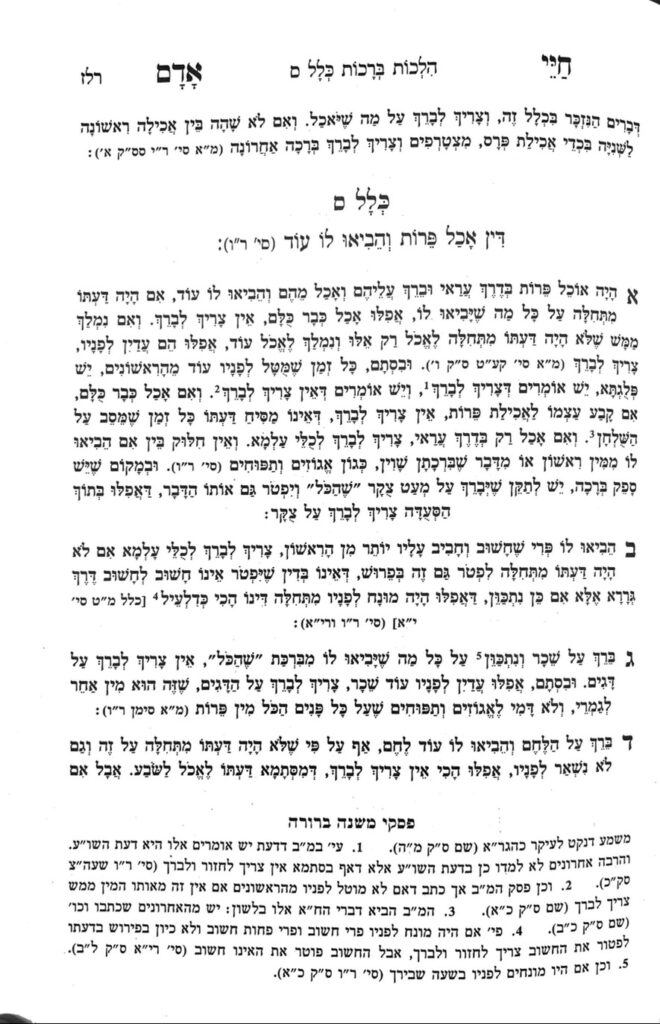We are beginning Klal 60, which discusses extending a bracha. There are many different points to this concept. The first concept we need to understand regarding extending a bracha are the different levels of intent one can have when making a bracha, and how they will relate to extending it.
There are five levels of intent one can have at the time of their bracha:
- Intent to limit their eating. This concept is called nimlach in halacha. The full concept really is first hesech hadaas, where he decides to stop eating, and then changes his mind, nimlach, which means to change ones mind. It can apply in two ways:
- One is eating and makes an active decision that they are finished. A true nimlach can sometimes be tricky to apply, because many people will decide they are finished eating, only to continue eating a few moments later. However, if one truly decided they were finished eating, and then changed their mind and decided to eat more, they would need to make a new bracha (see also shiur 1152).
- Similarly, one can create a nimlach from the beginning of their eating session, in that they can decide at the time of their bracha that they will only eat a specific amount of food. For example, a person decides they will only eat one orange.
- One is eating and makes an active decision that they are finished. A true nimlach can sometimes be tricky to apply, because many people will decide they are finished eating, only to continue eating a few moments later. However, if one truly decided they were finished eating, and then changed their mind and decided to eat more, they would need to make a new bracha (see also shiur 1152).
- On the other extreme is a person who plans to eat as much as possible. He has explicit daas that he wishes to cover as much as possible with his bracha.
- No specific intent. This is known as stam daas.
- A person is koveah (establishes) themselves. The Chayei Adam gives the example of the equivalent of a fruit party, where one has no specific daas about which fruits they will eat, but plans to eat many and varied fruits.
- A person “outsources” their daas to someone else, such as a guest vis a vis their host. The guest does not have daas for what will be served, but rather has daas that they will eat whatever the host serves.
- The poskim write that this level of daas will apply between husband and wife and similar family situations.
Summary
There are five levels of intent one can have at the time of their bracha:
- Nimlach to eat a specific number of foods
-
- Intent to eat as much as possible
- Stam daas
- Koveah/k’vius to eat
- “Outsourced” daas



